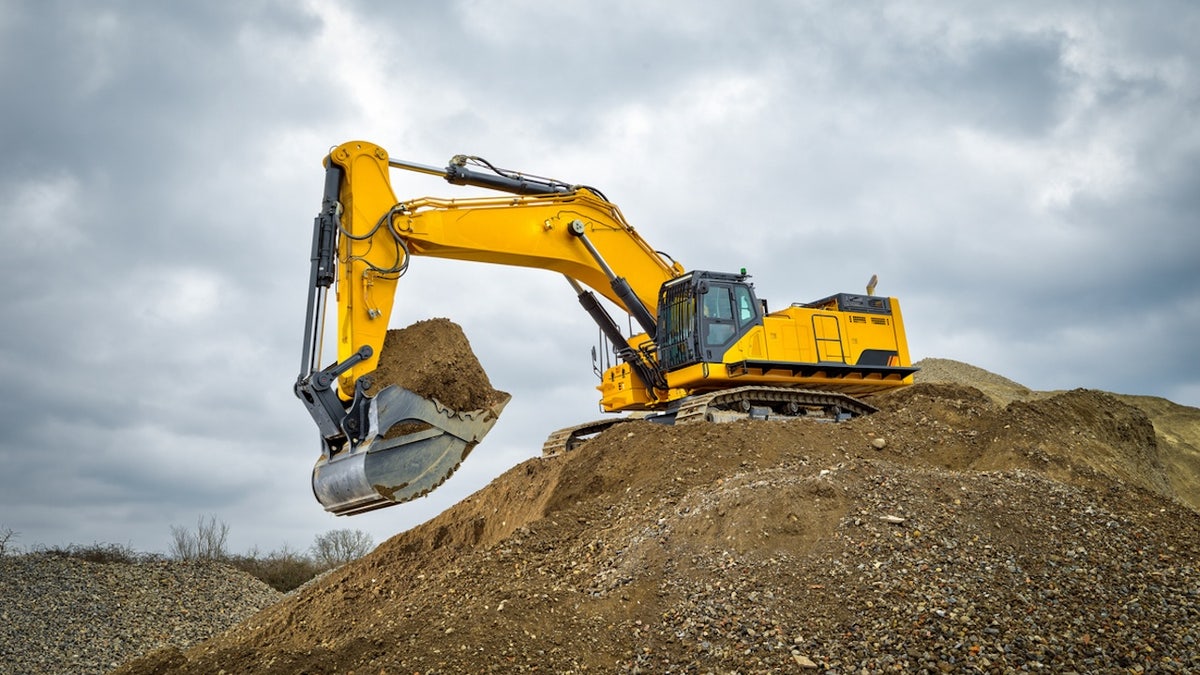Several people have contracted Valley fever following an outdoor music festival near Bakersfield, California, according to a statement from the California Department of Public Health (CDPH).
Valley fever (coccidioidomycosis) is a lung infection caused by breathing in a soil-borne fungus found in California and some parts of the southwestern U.S.
So far, five patients who attended the outdoor music festival, Lightning in a Bottle, have been diagnosed with the infection. Three of those have been hospitalized, the CDPH reported.
More than 20,000 people attended the festival, held from May 22 to May 27 at Buena Vista Lake.
There is the potential for additional cases to emerge among festival-goers, health officials said.
Several people have contracted Valley fever following an outdoor music festival near Bakersfield, California (not pictured). (iStock)
For those who attended the festival or visited Kern County and are experiencing symptoms, the CDPH recommends they see a doctor and ask about testing for the infection.
“While the event occurred two months ago and mild cases of Valley fever might have already resolved, other patients with more long-term or severe disease may still be symptomatic or undiagnosed,” the CDPH stated.
WHAT IS EEE, THE MOSQUITO-BORNE DISEASE THAT KILLED A NEW HAMPSHIRE MAN?
Tom Langdon Hill, director of training for the CCHS Foundation in Tucson, Arizona, which offers free training regarding the medical needs of the homeless, said it is “desperately difficult” to predict when and where someone may be exposed to Valley Fever.
“However, the outbreak tied to the outdoor music festival, Lightning in a Bottle, happened in an area already known as a Valley Fever hotspot, with 34 deaths tallied in 2022 alone,” Hill told Fox News Digital.

Symptoms typically include cough, fatigue, fever, trouble breathing and chest pain. They usually begin within one to three weeks of infection. (iStock)
“While exposure to dust may be the cause of that outbreak, a just-released study points to wildfires as another possible source for the spread of Valley Fever.”
Symptoms and transmission
The majority of people who are exposed to the fungus do not get sick, but about 40% will develop respiratory symptoms, per the Centers for Disease Control and Prevention (CDC).
Symptoms typically include cough, fatigue, fever, trouble breathing and chest pain. They usually begin within one to three weeks of infection.
From 2018 to 2022, California recorded between 7,000 and 9,000 cases of Valley fever each year.
Approximately 5% to 10% of people with Valley fever will develop complications, which can include serious lung problems, the CDC stated.
For around 1% of people, disseminated disease can occur, which is when the infection spreads to other parts of the body, such as the skin, joints, bones or brain.
The infection does not spread from person to person or between people and animals, the CDC said.

While there is not yet a vaccine for Valley fever, three vaccines are currently in development. (iStock)
Valley fever has been increasing in prevalence in California, the health department noted.
Cases tripled between 2014 and 2018. From 2018 to 2022, the state recorded between 7,000 and 9,000 cases per year.
It is most common in the San Joaquin Valley and in the Central Coast areas.
‘SLOTH FEVER,’ OR THE OROPOUCHE VIRUS, HAS ENTERED THE US, HERE’S WHAT TO KNOW
Certain areas with high dust exposure present a greater risk. Those include places where construction, archaeology, farming or military training occur, per the CDC.
Homeless populations are also at a higher risk, according to Hill.

Homeless populations are also at a higher risk for Valley fever, according to experts. (Tayfun Coskun/Anadolu Agency via Getty Images)
“The homeless spend much more of their time exposed to dust and the smoke from wildfires,” Hill told Fox News Digital.
“It is no surprise that those on the streets have both higher rates of Valley fever and a startlingly higher rate of deadly complications from the disease.”
Is a nationwide spread possible?
Dr. George Thompson, a professor at UC Davis Health and co-director of the Center for Valley fever in Sacramento, told Fox News Digital in 2023 about a ramp-up in cases over the past several years.
“We have seen a gradual increase in cases over the last five years, and a greater number of patients are coming into our clinic for diagnosis and treatment,” he said at the time.
IS MPOX THE NEXT COVID? INFECTIOUS DISEASE EXPERTS ADDRESS PANDEMIC POTENTIAL
In 2019, a study by Morgan Gorris — which was published in GeoHealth, a journal focused on environmental and health sciences research — suggested that climate change could trigger an expansion of Valley fever into northwestern states, including Idaho, Wyoming, Montana, Nebraska, South Dakota and North Dakota.
“At first, I was skeptical,” said Dr. Thompson of California. “But I’ve recently heard about new cases emerging in Nebraska and even Missouri, so I think it’s in the realm of possibility.”

Certain areas with high dust exposure present a greater risk. Those include places where construction, archaeology, farming or military training occur, per the CDC. (iStock)
Valley fever cases are expected to arrive in northern Utah and eastern Colorado by 2035, according to the study. Gorris, the study’s author, also predicts that the disease will become endemic in Nebraska, southeastern Montana, southern Idaho and South Dakota by 2065, and that it could arrive in northern Montana and North Dakota by 2095.
ANTHONY FAUCI’S WEST NILE VIRUS DIAGNOSIS: WHAT TO KNOW ABOUT THE MOSQUITO-BORNE DISEASE
Other research has linked the rising Valley fever cases to an increase in dust storms. Another recent GeoHealth study by Daniel Q. Tong, a scientist and professor at George Mason University in Virginia, found that dust storms in the Southwest have risen by 240% between the 1990s and 2000s, followed by an 800% spike in Valley fever cases between 2001 and 2011.
Treatment and prevention
A blood test sent to a lab can confirm a current or prior infection of Valley fever, and a chest X-ray or CT scan can detect cases of pneumonia, according to the CDC.

Antifungal medications such as Fluconazole and Itraconazole are typically used to treat Valley fever. (iStock)
Antifungal medications such as Fluconazole and Itraconazole are typically used to treat Valley fever.
While there is not yet a vaccine for Valley fever, three vaccines are currently in development, including one that has been successfully tested with dogs.
CLICK HERE TO GET THE FOX NEWS APP
The National Institute of Allergy and Infectious Diseases (NIAID), part of the National Institutes of Health, recently announced $4.5 million in funding to support research toward diagnostics, therapeutics and vaccines for the disease.
CLICK HERE TO SIGN UP FOR OUR HEALTH NEWSLETTER
The CDC notes that certain groups are more vulnerable.
These include people 60 years of age and older; those who have weakened immune systems as a result of certain diseases or medical conditions; pregnant women; people with diabetes; and people who are Black or Filipino.

Certain groups are more vulnerable, including people 60 years of age and older, or those who have weakened immune systems as a result of certain diseases or medical conditions. (iStock)
For those in high-risk groups, doctors recommend avoiding construction sites or areas where soil is often stirred up into the air.
People can also wear an N95 respirator, a type of high-quality mask, to minimize exposure in dusty areas.
For more Health articles, visit www.foxnews.com/health
Early diagnosis and treatment is important, doctors advise.
Fox News Digital reached out to the CDPH and the organizers of the music festival for comment.





